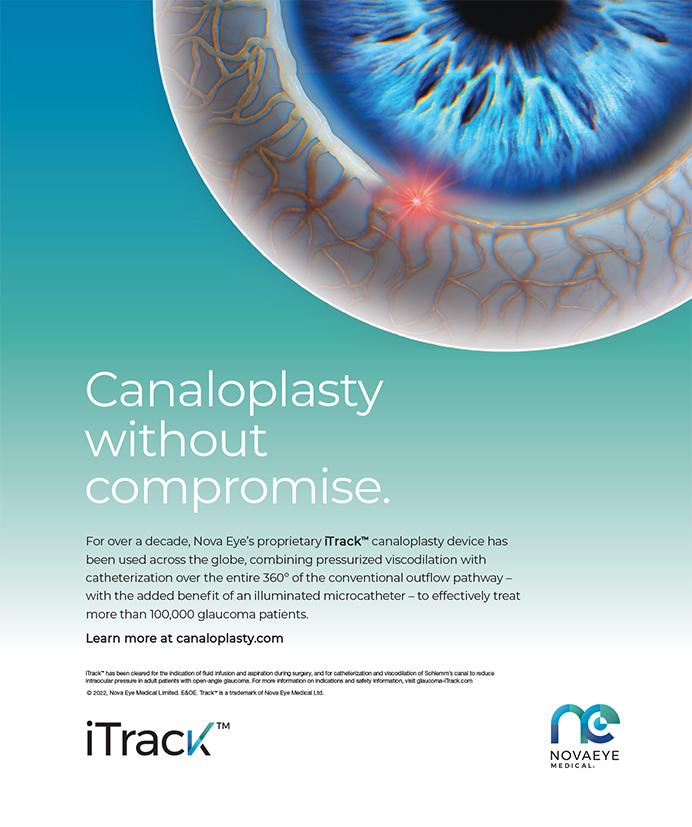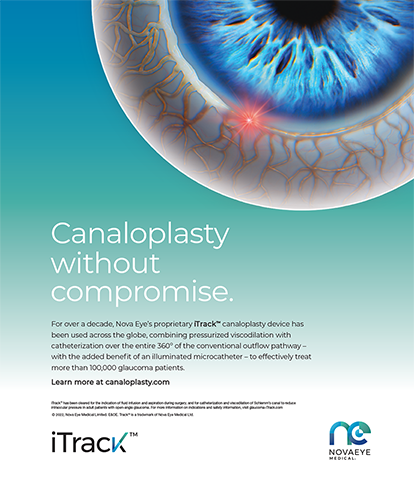What are the benefits of corneal cross-linking with riboflavin and ultraviolet A?
Thanks to the intuition and the scholarship of Theo Seiler, MD, PhD, Gregor Wollensak, MD, and Eberhard Spoerl, PhD, we now have a treatment that provides real hope to many patients affected by keratectasia and keratoconus. Clinical trials have shown that corneal cross-linking stabilizes progressive corneal ectasia. They have also found that the therapy partly reverses the pathological process underlying ectasia and thus reduces the need for more invasive corrective procedures such as penetrating keratoplasty.1 Finally, research has demonstrated that cross-linking is more efficacious when combined with other procedures, such as the implantation of Intacs corneal implants.2
In 2007, my colleagues and I developed transepithelial cross-linking, a variation on Dr. Seiler's technique that allowed us to instill riboflavin without removing the corneal epithelium. Because the cornea remains intact, patients are not at risk of developing epithelial irregularities postoperatively. Moreover, our patients have reported that they did not experience any pain during the procedure and that they are highly satisfied with their outcomes.
When I described transepithelial cross-linking to Dr. Seiler, he was very supportive and invited me to present the technique at the 2007 International Congress of Corneal Cross Linking in Zurich. Unfortunately, the scientific community in Italy has not received our procedure as warmly. Although my colleagues and I have presented transepithelial cross-linking at many international meetings, it still has not been widely accepted in our home country. I am not surprised, because my experience with the International Intra-Ocular Implant Club showed me that ideas are often rejected when they are first introduced.
Has the recent global economic crisis affected your practice?
Our statistics show that the average flow of patients and the volume of surgical procedures at the Istituto Laser Microchirurgia Oculare in Brescia, Italy, are still growing by approximately 20 every year. We believe that this increase is due to the addition of three new departments (posterior segment, glaucoma, and general ophthalmology) as well as the quality of care offered by the institute's five doctors and 20 healthcare and administrative professionals.
I believe that the introduction of advanced IOL technologies such as the AcrySof Restor lens has also contributed to the recent upswing in cataract and refractive lens exchange surgeries at the institute. I attribute our patients' satisfaction with these lenses to the care we take to meet their individual needs.
Can you share an update on your research into presbyopia-correcting procedures?
My colleagues and I are following 300 patients who underwent Presbyopic-Curve LASIK approximately 2 years ago. This procedure uses an aspheric ablation pattern to replicate the spherical aberration found in a normally accommodating eye. Ninety percent of the patients we have treated see 20/20 at distance and J2 at near. The remaining 10 see J2 or J3 at near and are still satisfied with their distance vision. We can also apply the concept of Presbyopic-Curve LASIK to surface ablation and the fitting of presbyopia-correcting phakic IOLs.
What do you like the best about living in Italy?
As a musician, I draw a lot of my creative energy from Italy's cultural masterpieces. Although Italy is facing a difficult era in which selfishness and a desire for money and power have overcome creativity and beauty, I still believe that the country's strong cultural and artistic tradition provide a solid foundation for a new Renaissance.
Do you have a favorite vacation spot?
I like to visit places that preserve the presence of previous populations and allow me to appreciate their capacity for creation with limited technology. I recently had a chance to see the Egyptian pyramids for the second time. It was a very emotional trip.
My favorite place to visit, however, is Kanuhura, a small island in the Maldives. This fascinating spot in the Indian Ocean allows me to clear my mind and relax. I am anxious to share this beautiful island with my 15-month-old twins, Francesco and Chiara, but they are still too young to take the long trip. When they are old enough, I hope to visit Kanuhura as a family and recapture the relaxing experience I shared with my wife on previous visits.
- Wollensak G. Crosslinking treatment of progressive keratoconus: new hope. Curr Opin Ophthalmol. 2006;17(4):356-360.
- Kamburoglu G, Ertan A. Intacs implantation with sequential collagen cross-linking treatment in postoperative LASIK ectasia. J Refract Surg. 2008;24(7):S726-S729.


